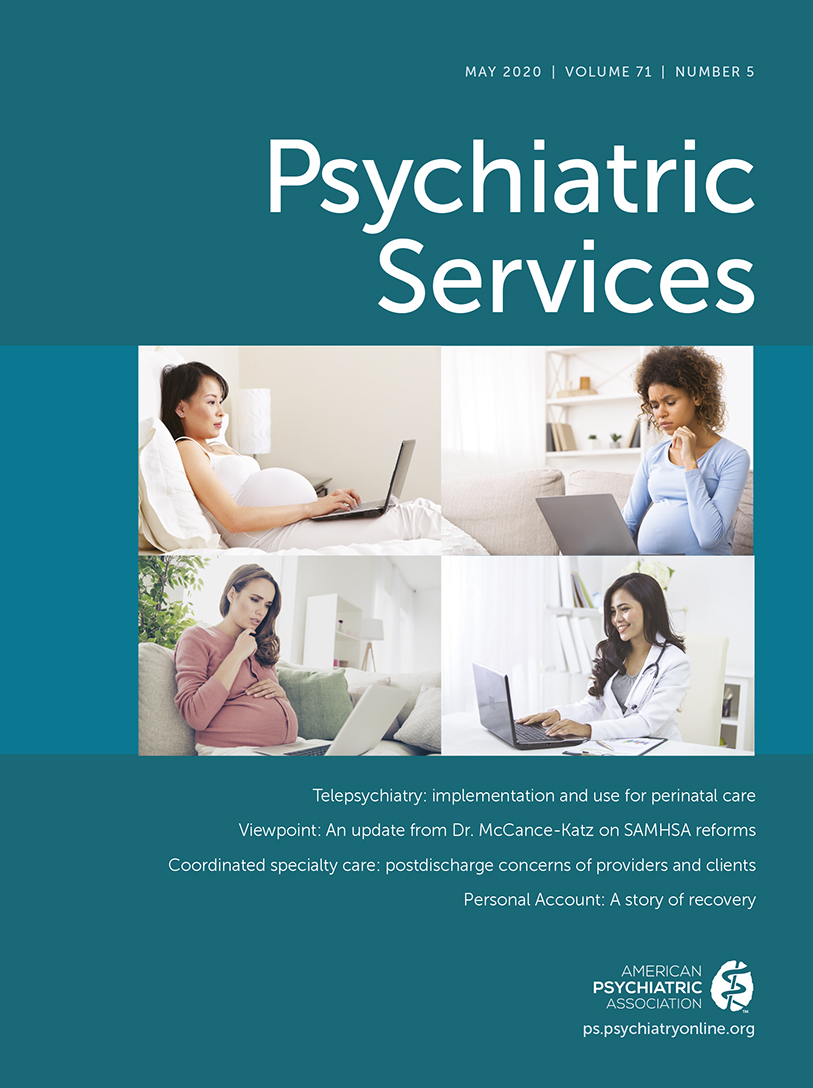Following a long series of referrals, Robin finally enters what is increasingly recognized as best practice care: an early intervention service for psychosis (EIP). However, after 2 years of receiving flexible and multidisciplinary care, Robin must “graduate” from the program and move on to other services—an uncertain next step in the path to recovery.
In the past 2 decades, EIP services have emerged across North America, Europe, Asia, and Australia, with dual objectives of providing phase-specific interventions and improving access to needed care to reduce treatment delays. To address the latter, initiatives such as outreach campaigns, open referral policies, and other interventions have been encouraged (
1). This understandable focus on pathways
to EIP care has eclipsed the arguably equally important, yet underresearched, pathways
out of EIP care.
Fortunately, new research has increasingly recognized the challenges that can arise during pathways out of EIP care (
2). In this issue of
Psychiatric Services, Jones et al. (
3) offer a qualitative exploration of matters relating to transfers between EIP (also known as coordinated specialty care [CSC] in the United States) and subsequent care, as well as their implementation. On the basis of 144 interviews with diverse stakeholders, the authors carefully identified and described the logistics behind transfers, service fidelity to recommended guidelines, and the subjective experience of transfers from both clinician and client perspectives. Their work highlights several additional points that warrant further reflection.
First, the authors make clear that there is an obvious need for collaboration not only between but also within services, and this collaboration should include client perspectives and involvement. Although many clients were previously informed by the service about their discharge, some clients nonetheless reported that they had not discussed the prospect of discharge with their provider or were not always aware of their discharge plan, potentially setting the stage for future disengagement. As one can imagine, discharge can be distressing for clients if, unsure of what to expect after EIP, they are faced with the possibility of soon losing services they have benefited from or relied upon. This finding is particularly problematic given that client-oriented care and shared decision making are increasingly acknowledged as fundamental values of youth-centered care (
4). However, as the authors discuss, recognizing and evaluating this best practice regarding transitions is itself lacking in guidelines and recommendations, despite its being a critical step during the client’s care journey. In other words, while EIP service providers are likely mindful of the need to signal their time-limited provision of services, ensuring that this is communicated in a structured and systematic manner is necessary so that clients and clinicians have the same expectations.
Availability of peer support is another factor that may facilitate post-EIP engagement and help bridge the gap between EIP and other services. Unfortunately, despite the field’s growing appreciation of peer support as a vital aspect of mental health care, its actual implementation remains limited in some settings. Nonetheless, its potential utility in transitions was highlighted in this study by the challenges clinicians described in maintaining engagement and adherence to post-EIP treatment. Peer support could ensure some continuity during the handoff between EIP and post-EIP services, thereby promoting ongoing engagement and ultimately supporting successful transitions. Over time, the integration of peers (and peer support) could also be facilitated by digital platforms that are already being designed to improve continuity of care after EIP (
5).
Finally, the uncertainty regarding which strategies can be used to mitigate the problem of service discontinuity at the time of transitions (whenever they occur) is reflected in the unstandardized approaches and varying expectations related to EIP discharge that Jones et al. describe. Although innovations such as extending EIP or “stepped-down” transitional approaches may help to facilitate smoother transfers between services, these strategies are far from solving the larger health care problem: that post-EIP mental health care is often “the opposite of recovery,” expensive, inaccessible, agnostic to client needs, and thus a potential contributor to disengagement. Unfortunately, these issues coincide with other treatment, financial, and structural barriers encountered by those who could benefit from receiving psychopharmacologic or supportive, therapeutic care—barriers that themselves warrant further research to identify possible solutions to mitigate their negative effects and improve mental health care services in general.
Jones et al. provide an in-depth examination of transitions after EIP/CSC care from both clinician and client perspectives. Although the U.S. health care setting in which the study was conducted poses particular challenges in regard to transitions, these challenges and their potential solutions require additional research and action across EIP services worldwide. Without more structured transitions to ensure a seamless handoff between EIP services and the broader mental health care system and without the implementation of facilitators to improve post-EIP engagement, EIP services will remain islands of order in a sea of chaos—a sea that clients like Robin will be left to navigate.

